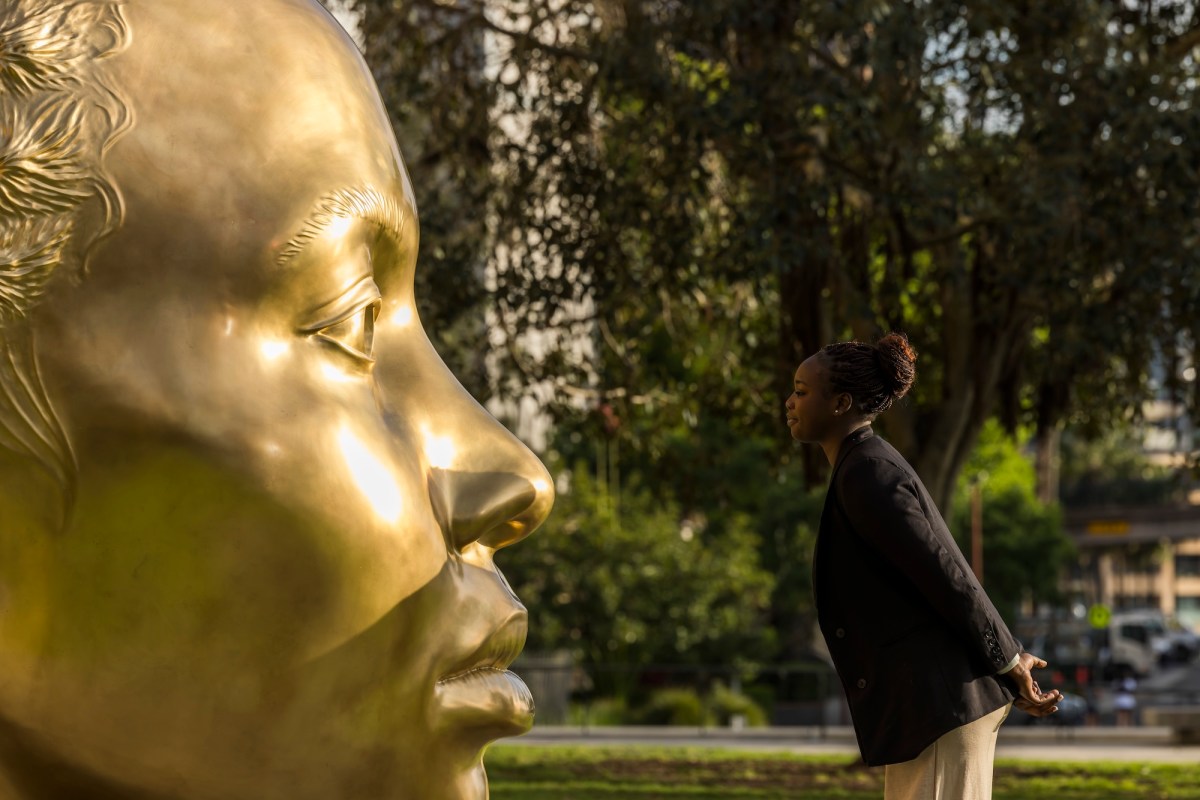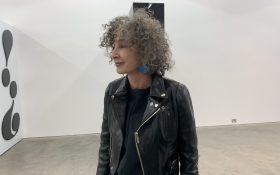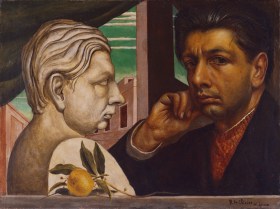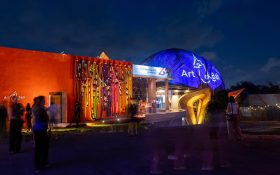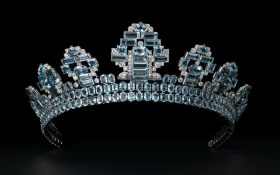Two major new sculpture commissions in Sydney have been unveiled this past week, and collectively they say a lot about the way audiences engage with public art, and who pays for it.
Walking between the Art Gallery of NSW’s (AGNSW) two buildings – Naala Badu (north) and Naala Nura (south) – you may be observant enough to notice a new outdoor piece by Korean artist Lee Ufan. It is an understatement to say it is subtle.
Double-sided with highly polished steel sheets that reflect both buildings, the sculpture offers a bridge – one that connects the two sites (two years on since opening), but also one that connects the role of art inside and outside the building, and art’s capacity for deep contemplation and Instagramable moments.
Not far away at the Museum of Contemporary Art Australia (MCA), another major sculpture by an internationally celebrated artist, has also been unveiled and invites that Instagram moment.
Here, the British artist Thomas J Price presents a golden bust of an anonymous black woman, replete with intricate hair braids sparkling in the sun. People of all ages, walking the Harbour shoreline, divert to take a snap.
What’s the attraction – do we see ourselves in her image? And, does Price make sense for contemporary Australian stories? Let’s dive into what these two major pieces say about institutional commissioning today.
Read ahead:
New sculpture: Thomas J Price’s ‘Ancient Feelings’
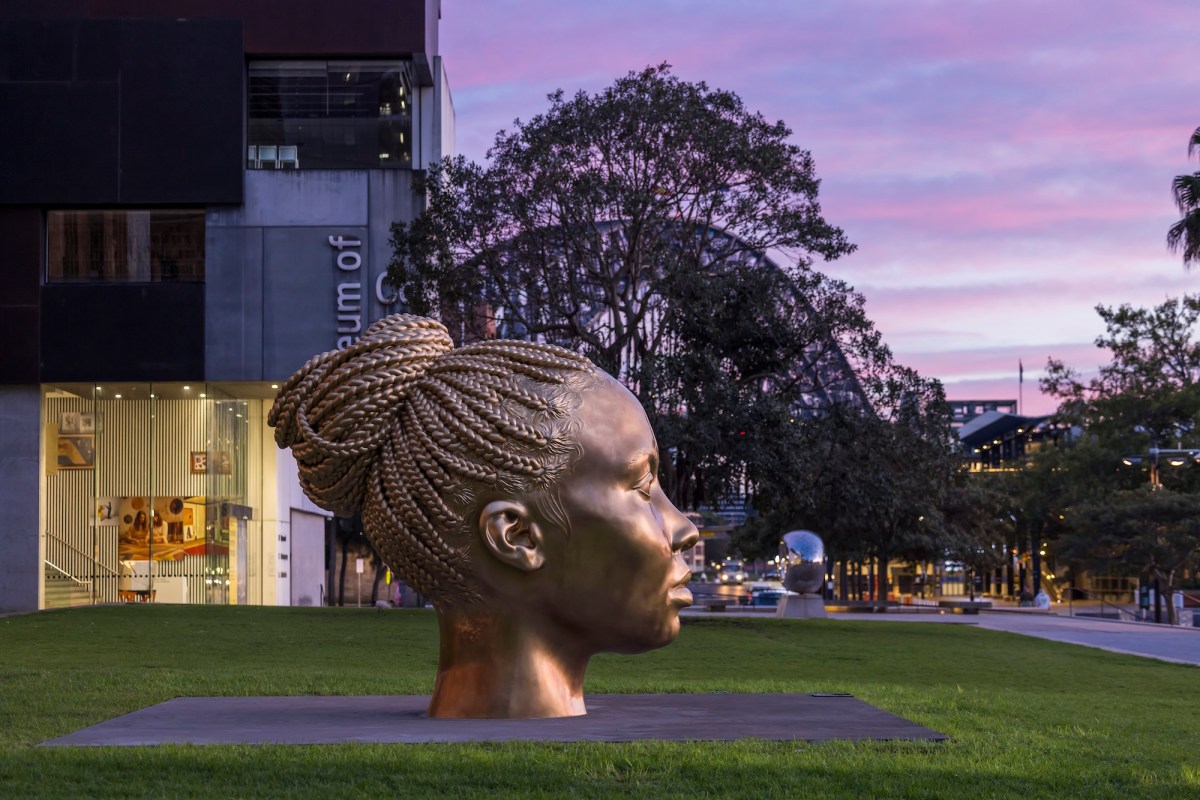
Thomas J Price is a bit of a superstar. This year he has unveiled nine major public sculptures, including Grounded in the Stars in New York’s Times Square and Time Unfolding in Florence’s historic Piazza della Signoria. So, from that perspective he is a safe and newsworthy choice for the MCA, which has had its share of tough blows this past year.
Australians, of course, know Price’s work from the 2023 NGV Triennial, where the pair of sculptures, All in and Reaching Out captured the interest of viewers by dint of their everydayness and scale.
Unlike those works, however, the new commission for the MCA, Ancient Feelings (2025) is not a full body sculpture, typically looking into the screen of a phone. Rather, it is a woman’s monumental head rendered in golden bronze and riffs off (as its title suggests) those colossal sculptures of gods typical of ancient Greece, Rome or Egypt – a revered, superior being. Perhaps the lesson is that we should all be revered?
What is significant here – as with all of Price’s public sculptures – is the removal of the pedestal, and a kind of debunking of the power structures reserved for public commemorations. He blurs the space between the ordinary and the extraordinary. Price explains, simply, ‘Ancient Feelings raises questions about who gets to be seen and who gets to be valued.’
Price’s new sculpture: is it successful?
It is the first time Price has presented a bust in the public domain, which are usually reserved for his indoors exhibitions, and it is a bit of a technical feet, combining a traditional wax technique with 3D printed moulds to create the 1.5-tonne sculpture. But is it successful?
It doesn’t have the same everyday connection that publics have with his other sculptures, which wear the Esperanto of urban life – hoodies, jeans, sneakers and phone. I believe they see themselves more in these.
While her signature braided hair is perhaps less common in Australia than, say, the US or UK, it is very much a future-forward perspective in how – and who – we consider Australian, and that has a timely quality to it, as our national identity changes at a rapid rate.
However, I think people are attracted to this sculpture because they’re not so much as seeing themselves reflected, but rather wanting to be photographed with it – drawn like bugs to a night light, and seduced by its golden hue sparking in the sun.
MCA Director Suzanne Cotter said it was important to take the ideas the institution values outside its walls, to the public domain. This is especially so, given the Museum’s recent adoption of an admission fee.
Cotter adds: ‘Everyone has an opinion about the art they might experience in public spaces. And in an era where the role of the monument has never been more hotly debated, The Neil Balnaves Commission offers propositions and time for reflection from living artists who are engaged with our contemporary world.’
That shift in the tone of public art (and arguably its role also) is no better illustrated than through the fact that Price’s commission was unveiled on the 30th anniversary of Jeff Koon’s Puppy, which also sat outside the MCA to capture the imagination of audiences.
New Sculpture: Lee Ufan’s ‘Relatum – dialogue’
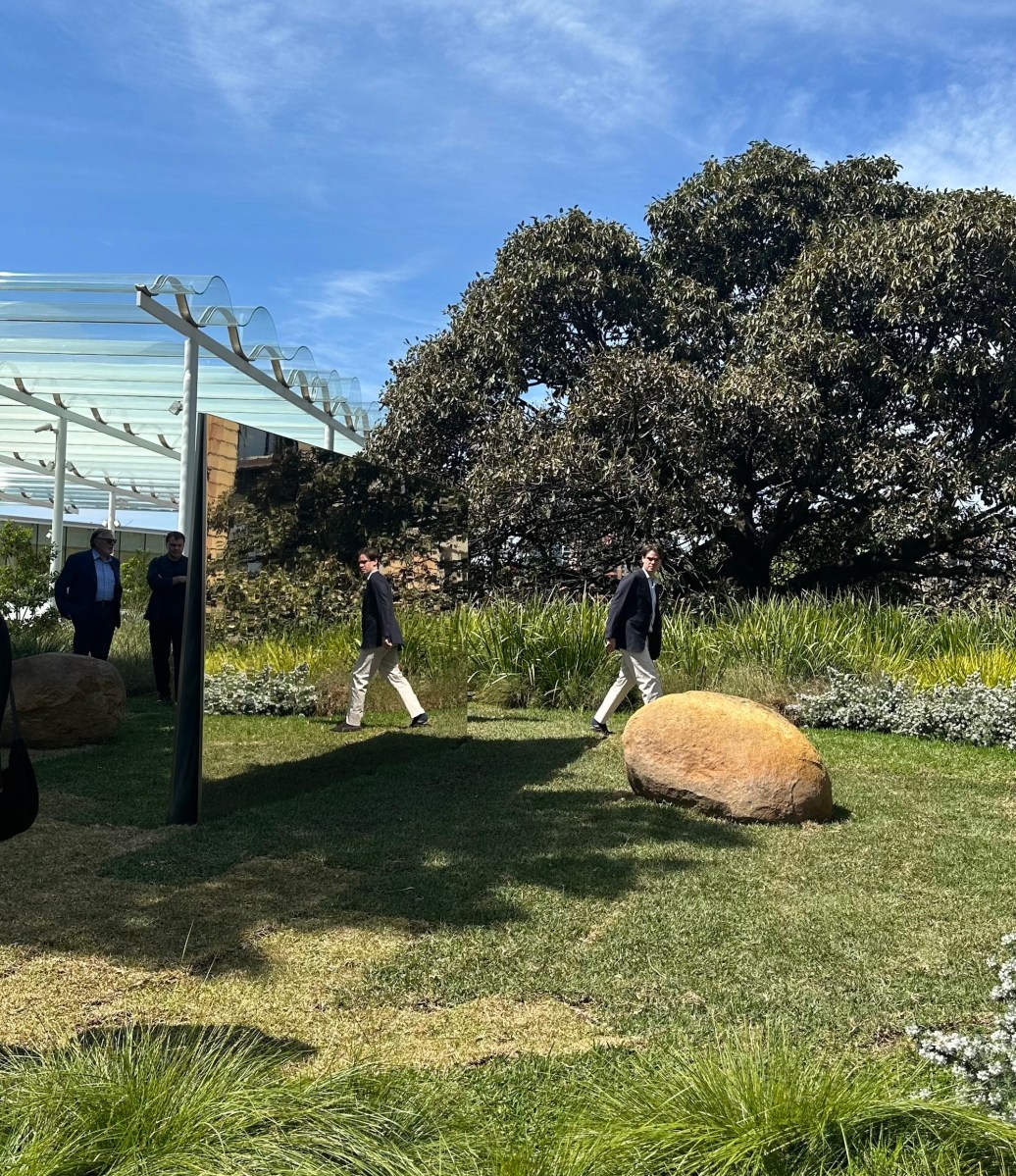
Taking a different approach, Lee Ufran has a long connection with AGNSW, and the unveiling of this commission follows a major survey of his work at the gallery: it is less about a high-profile artist helicoptered in to make headlines.
Lee says of the sculpture: ‘I want to have a conversation about connecting nature with industrial society.’ So, like Price, he wants us to use his sculpture as a portal to further thought.
During a visit, Lee worked with the curators on the selection and placement of all the sculpture’s elements – such as the angle of the steel sheets and arrangement of the enormous granite boulders. This is the precision of minimal art at its best.
That connection between artwork, architecture, viewer, surrounding land, trees and sky, is further extended by it sitting alongside an existing work by the German artist Joseph Beuys, 7000 oaks (7000 Eichen), comprised of a Moreton Bay Fig tree and a basalt marker.
What I like about Lee’s ‘Relatum – dialogue’ is that it operates on several levels for the viewer: one is invited to deviate off the path and pause in the lawn area (similar to Price’s sculpture), but it also invites one to consider how it reflects the landscape – both natural and built – and our own place in that as one’s reflection becomes part of the composition.
I predict it will become a destination Instagram moment – perhaps not so much Lee’s intention, but an immersive consideration front of mind for galleries today.
New sculpture and the role of philanthropy
Both these sculptures have been made possible through extraordinary philanthropic gifts. We often forget that operational and collecting budgets for public galleries operate as two separate piles of cash – the later primarily thanks to the generosity of patrons.
This is especially important to assure the growth and relevancy of institutions in today’s funding climate – for example this sculpture is unveiled as the AGNSW faces a $7.5 million cut in funding and staff loses, and MCA has been forced to charge a general entry fee.
Relatum – dialogue was commissioned with funds from the Brownlow-Small Bequest 2025, while Ancient Witness is the inaugural Neil Balnaves Tallawoladah Lawn Commission, and the first in a three-year series of public works.
Cotter says of the Balnaves commission: ‘It demonstrates the transformative power of philanthropy in enabling us to experience ambitious art in our daily lives.’
Hamish Balnaves, CEO of The Balnaves Foundation says: ‘My father strongly believed in the power of art to enrich lives. He was particularly passionate about bold public sculpture and its ability to challenge perspectives and ignite conversation.’
Price’s sculpture definitely does that.
Similarly, Lee’s commission at the AGNSW connects the passions of collectors with the passions of publics. James Brownlow was an architect, and the connection of Lee’s work to the surrounding buildings is sympathetic to his and partner Doug Small’s love of architecture, landscape design and minimalist Asian art.
Small was the nephew of Sir William McKell, a former Labor Premier who became Governor-General, and who was also a director of Grace Bros department stores.
Read: Why wills and bequests are not just for philanthropists
Bequests (gifts pledged via a will) are thankfully on the rise, and today there is more flexibility with patrons involved in how they wish their legacy to be spent. The average bequest at the AGNSW is about $100,000, and to date some $40 million bequests have been disclosed, with many significant gifts promised.
